Osteopontin deficiency promotes cartilaginous endplate degeneration by enhancing the NF-κB signaling to recruit macrophages and activate the NLRP3 inflammasome
- PMID: 39242551
- PMCID: PMC11379908
- DOI: 10.1038/s41413-024-00355-3
Osteopontin deficiency promotes cartilaginous endplate degeneration by enhancing the NF-κB signaling to recruit macrophages and activate the NLRP3 inflammasome
Abstract
Intervertebral disc degeneration (IDD) is a major cause of discogenic pain, and is attributed to the dysfunction of nucleus pulposus, annulus fibrosus, and cartilaginous endplate (CEP). Osteopontin (OPN), a glycoprotein, is highly expressed in the CEP. However, little is known on how OPN regulates CEP homeostasis and degeneration, contributing to the pathogenesis of IDD. Here, we investigate the roles of OPN in CEP degeneration in a mouse IDD model induced by lumbar spine instability and its impact on the degeneration of endplate chondrocytes (EPCs) under pathological conditions. OPN is mainly expressed in the CEP and decreases with degeneration in mice and human patients with severe IDD. Conditional Spp1 knockout in EPCs of adult mice enhances age-related CEP degeneration and accelerates CEP remodeling during IDD. Mechanistically, OPN deficiency increases CCL2 and CCL5 production in EPCs to recruit macrophages and enhances the activation of NLRP3 inflammasome and NF-κB signaling by facilitating assembly of IRAK1-TRAF6 complex, deteriorating CEP degeneration in a spatiotemporal pattern. More importantly, pharmacological inhibition of the NF-κB/NLRP3 axis attenuates CEP degeneration in OPN-deficient IDD mice. Overall, this study highlights the importance of OPN in maintaining CEP and disc homeostasis, and proposes a promising therapeutic strategy for IDD by targeting the NF-κB/NLRP3 axis.
© 2024. The Author(s).
Conflict of interest statement
The authors declare no competing interests.
Figures

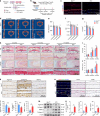
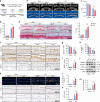


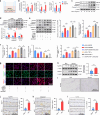
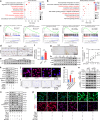
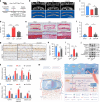
Similar articles
-
M2 macrophages regulate nucleus pulposus cell extracellular matrix synthesis through the OPN-CD44 axis in intervertebral disc degeneration.Osteoarthritis Cartilage. 2025 Apr;33(4):447-460. doi: 10.1016/j.joca.2024.12.007. Epub 2025 Jan 20. Osteoarthritis Cartilage. 2025. PMID: 39842659
-
Chlorogenic Acid retards cartilaginous endplate degeneration and ameliorates intervertebral disc degeneration via suppressing NF-κB signaling.Life Sci. 2021 Jun 1;274:119324. doi: 10.1016/j.lfs.2021.119324. Epub 2021 Mar 9. Life Sci. 2021. PMID: 33711382
-
Maltol ameliorates intervertebral disc degeneration through inhibiting PI3K/AKT/NF-κB pathway and regulating NLRP3 inflammasome-mediated pyroptosis.Inflammopharmacology. 2023 Feb;31(1):369-384. doi: 10.1007/s10787-022-01098-5. Epub 2022 Nov 19. Inflammopharmacology. 2023. PMID: 36401729 Free PMC article.
-
Research Progress on the Role of Cartilage Endplate in Intervertebral Disc Degeneration.Cell Biochem Funct. 2024 Sep;42(7):e4118. doi: 10.1002/cbf.4118. Cell Biochem Funct. 2024. PMID: 39267363 Review.
-
NF-κB signalling pathways in nucleus pulposus cell function and intervertebral disc degeneration.Cell Prolif. 2021 Jul;54(7):e13057. doi: 10.1111/cpr.13057. Epub 2021 May 24. Cell Prolif. 2021. PMID: 34028920 Free PMC article. Review.
Cited by
-
Role of macrophage in intervertebral disc degeneration.Bone Res. 2025 Jan 23;13(1):15. doi: 10.1038/s41413-024-00397-7. Bone Res. 2025. PMID: 39848963 Free PMC article. Review.
-
Exosomes derived from FN14-overexpressing BMSCs activate the NF-κB signaling pathway to induce PANoptosis in osteosarcoma.Apoptosis. 2025 Apr;30(3-4):880-893. doi: 10.1007/s10495-024-02071-z. Epub 2025 Jan 20. Apoptosis. 2025. PMID: 39833632 Free PMC article.
-
Osteopontin in Chronic Inflammatory Diseases: Mechanisms, Biomarker Potential, and Therapeutic Strategies.Biology (Basel). 2025 Apr 16;14(4):428. doi: 10.3390/biology14040428. Biology (Basel). 2025. PMID: 40282293 Free PMC article. Review.
-
Piezo1 promotes intervertebral disc degeneration through the Ca2+/F-actin/Yap signaling axis.Mol Med. 2025 Mar 8;31(1):90. doi: 10.1186/s10020-025-01147-z. Mol Med. 2025. PMID: 40057686 Free PMC article.
-
Pyroptosis: candidate key targets for mesenchymal stem cell-derived exosomes for the treatment of bone-related diseases.Stem Cell Res Ther. 2025 Feb 12;16(1):68. doi: 10.1186/s13287-025-04167-y. Stem Cell Res Ther. 2025. PMID: 39940049 Free PMC article. Review.
References
MeSH terms
Substances
Grants and funding
LinkOut - more resources
Full Text Sources
Molecular Biology Databases
Research Materials
Miscellaneous

